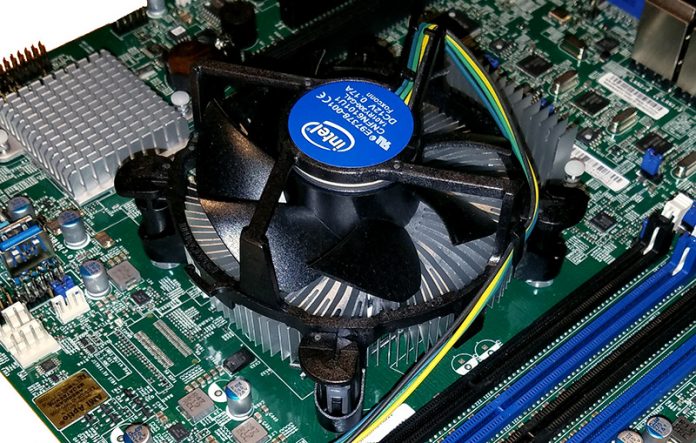Ever since the Intel Xeon E3 line was launched six years ago, the Xeon E3-1230 has been a uniquely good value. That tradition carries forward with the V6 generation. The Intel Xeon E3-1230 V6 is an excellent value again in the lineup. The quad core CPU is the lowest SKU to have Hyper-Threading. With eight threads many server workloads will be able to take advantage of the extra capacity.
Here is a quick look at the Intel Xeon E3-1200 lineup and a comparison of threads * clock speed.

As you can see, the Intel Xeon E3-1230 V6 is the lowest cost threads * clock speed CPU in the line-up. What that practically means is that if you are optimising on a cost/ perormance basis, this is the CPU to get.
Test Configuration
For this setup, we used what we would expect to be a fairly typical server:
- CPU: Intel Xeon E3-1230 V6
- Motherboard: Supermicro X11SSH-F
- RAM: 2x 16GB ECC DDR4-2400 (Crucial)
- SSD: Intel DC S3710 400GB
- OS: Ubuntu 14.04.5 LTS (performance benchmarks), Ubuntu 16.04.2 LTS, VMware ESXi 6.5, Centos 7.3
We did want to take a moment and discuss some of the comparison data we are going to use. We do have the entire AMD Ryzen SKU stack to data along with the entire Xeon E3-1200 V6 range’s CPU core/ clock variants. We also have some legacy data points to give additional perspective.
The Ryzen comparison is tough. Although it supports ECC memory on the CPU, we still are not seeing enough software maturity to call it a stable server platform. In addition, there are great workstation platforms but no real server platforms at the time of this writing. If you want a server, you want E3-1200 V6. If you are building a workstation with a NVIDIA or AMD GPU, Ryzen is certainly a competitor.
We have the Intel Core i7-7700 and i7-7700K chips in the comparison as well. Although many vendors will say workstations absolutely require ECC memory, there are plenty of customers who will trade ECC memory for 25% more performance.
Intel Xeon E3-1230 V6 Benchmarks
For our testing, we are using Linux-Bench scripts which help us see cross platform “least common denominator” results. We are using gcc due to its ubiquity as a default compiler. One can see details of each benchmark here. We are likely going to update the Linux-Bench shortly with a few new tests as well as an even simpler to use/ faster revision, but for now, we are using the legacy version that now has over 100,000 test runs under its belt.
Python Linux 4.4.2 Kernel Compile Benchmark
This is one of the most requested benchmarks for STH over the past few years. The task was simple, we have a standard configuration file, the Linux 4.4.2 kernel from kernel.org, and make with every thread in the system. We are expressing results in terms of compiles per hour to make the results easier to read.
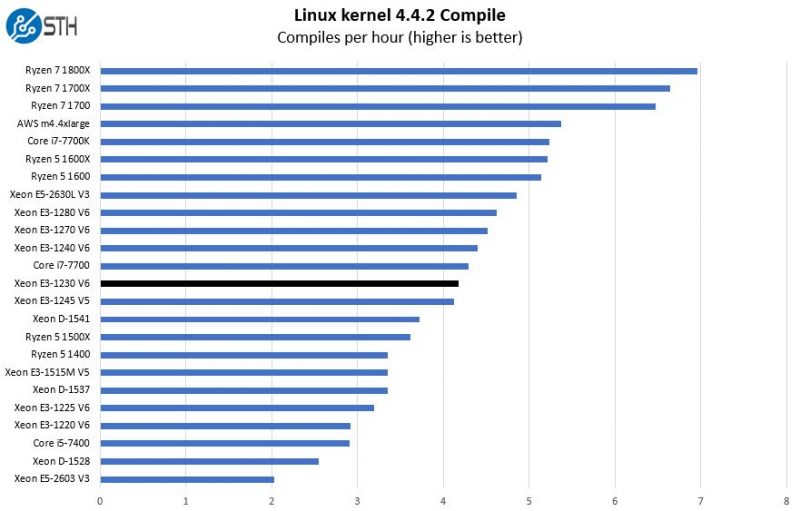
Here you can clearly see the impact of clock speed. Having half the cores of the Intel Xeon D-1541, the higher TDP, and clock speed along with a newer architecture allow the Intel Xeon E3-1230 V6 to sustain a solid lead.
c-ray 1.1 Performance
We have been using c-ray for our performance testing for years now. It is a ray tracing benchmark that is extremely popular to show differences in processors under multi-threaded workloads.
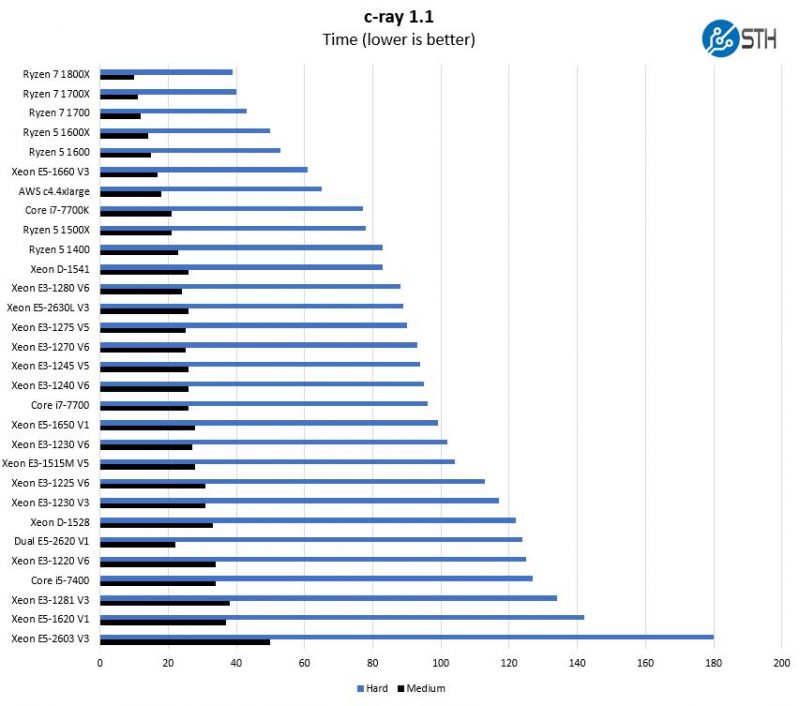
Here we see another solid showing for the Intel Xeon E3-1230 V6 and putting it squarely in the middle of the pack.
7-zip Compression Performance
7-zip is a widely used compression/ decompression program that works cross platform. We started using the program during our early days with Windows testing. It is now part of Linux-Bench.
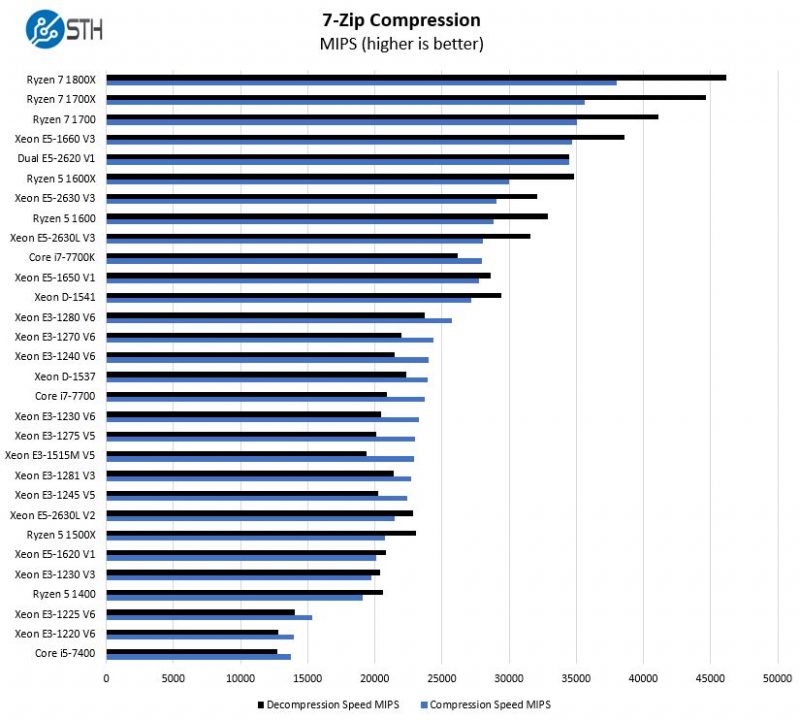
In the compression workload, the Intel Xeon E3-1230 V6 groups largely with other four core/ 8 thread CPUs. One can see it is around the performance of the previous generation E3-1275 V5.
NAMD Performance
NAMD is a molecular modeling benchmark developed by the Theoretical and Computational Biophysics Group in the Beckman Institute for Advanced Science and Technology at the University of Illinois at Urbana-Champaign. More information on the benchmark can be found here. We may replace this or augment with GROMACS in the next-generation Linux-Bench as that test is currently running through regressions.
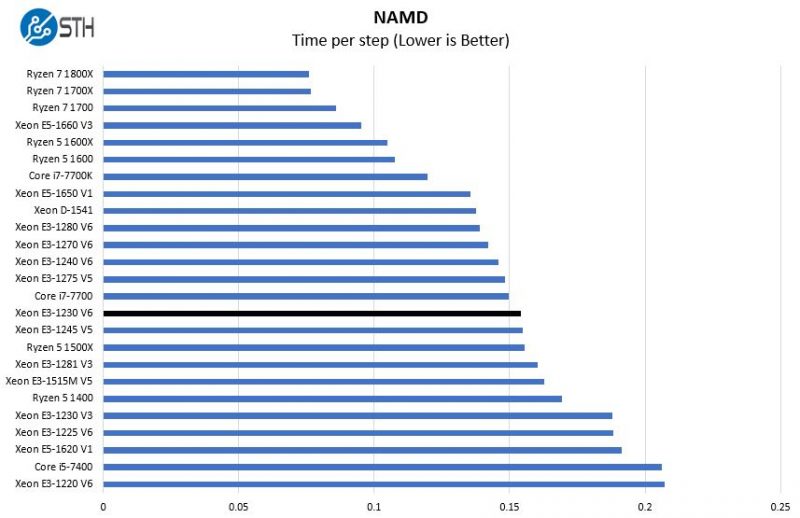
Here we can see a trend that we have noticed many times before. The Intel Xeon E3-1230 V6 is about on par with the one model designation higher from the previous generation.
Sysbench CPU test
Sysbench is another one of those widely used Linux benchmarks. We specifically are using the CPU test, not the OLTP test that we use for some storage testing.
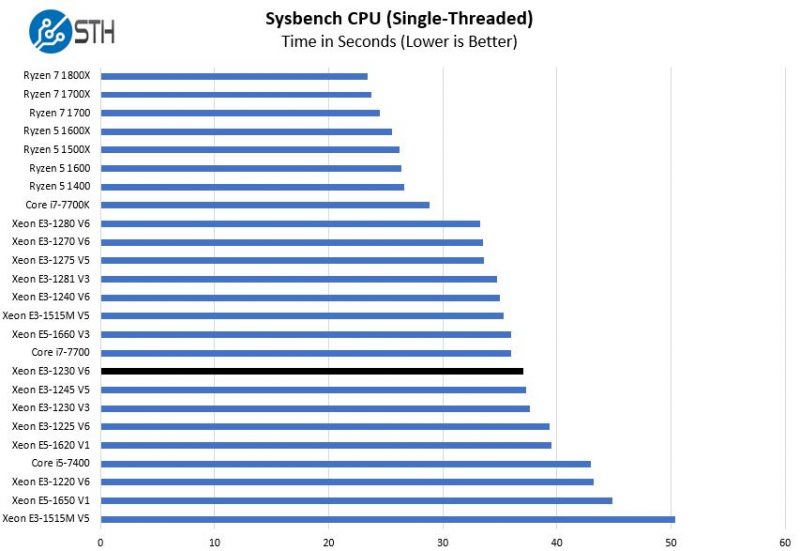
In this single threaded test we see a marginal improvement over the V6 CPUs without HT. In this generation, the Intel Xeon E3-1220 V6 is at a 3.0GHz base 3.5GHz turbo frequency while the Intel Xeon E3-1230 V6 is at 3.5GHz base and 3.9GHz turbo. That extra clock speed shows why this is a solid upgrade.
OpenSSL Performance
OpenSSL is widely used to secure communications between servers. This is an important protocol in many server stacks. We first look at our sign tests:
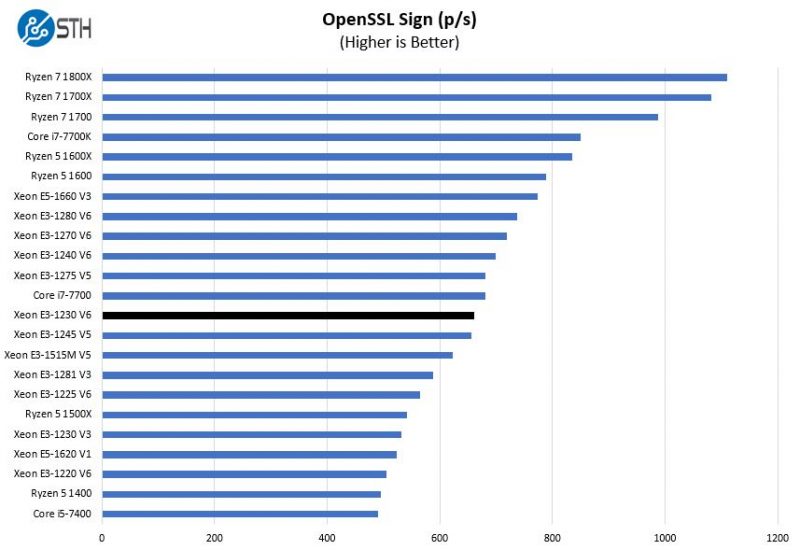
And our verify tests:
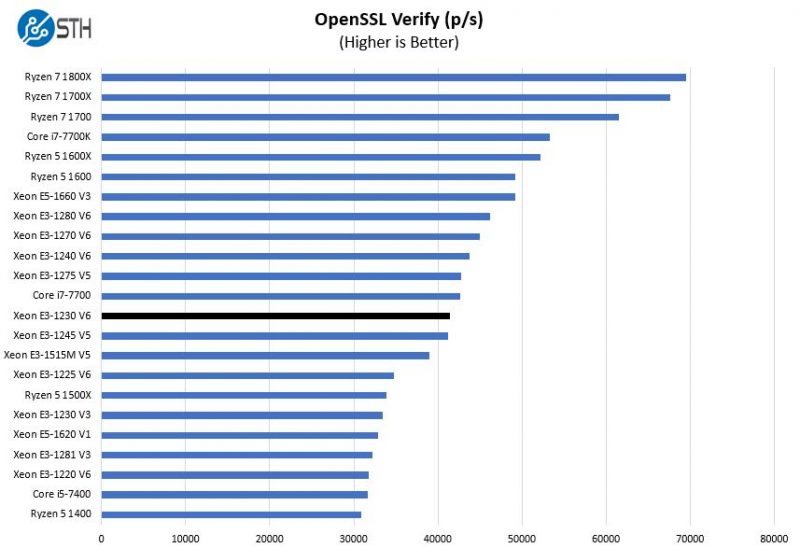
Overall you can see this CPU is close to the Intel Xeon E3-1240 V6. The question is whether the incremental performance boost is worth the price differential.
UnixBench Dhrystone 2 and Whetstone Benchmarks
One of our longest running tests is the venerable UnixBench 5.1.3 Dhrystone 2 and Whetstone results. They are certainly aging, however, we constantly get requests for them, and many angry notes when we leave them out. UnixBench is widely used so it is a good comparison point.
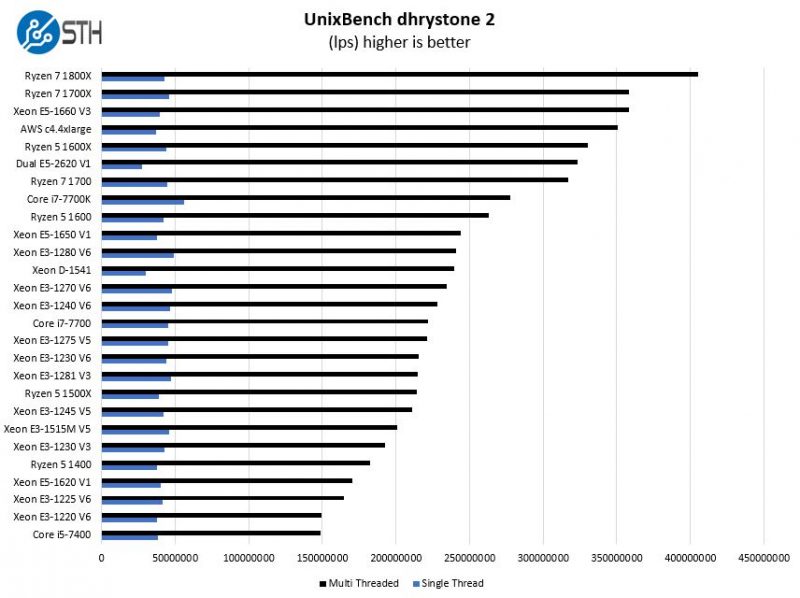
And the whetstone results:
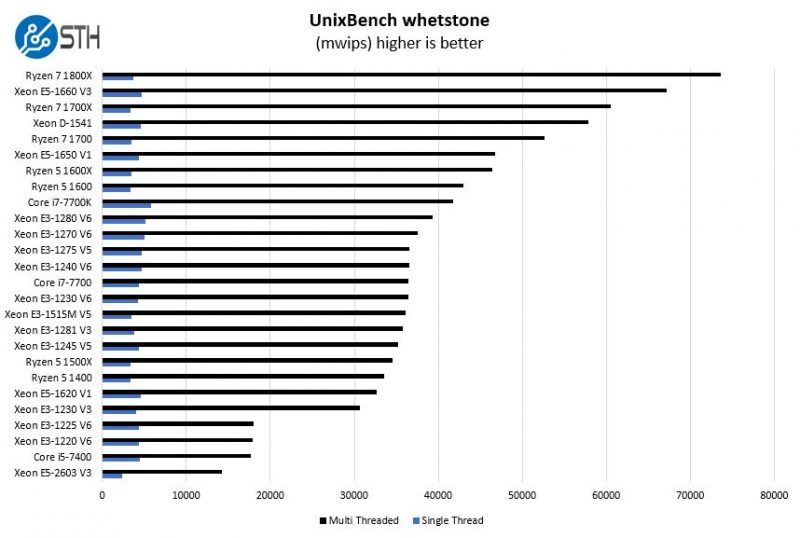
You can see an incremental improvement over the Intel Xeon E3-1230 V3 generation. We still do not think CPU performance is a big enough reason to upgrade three generations later. If you are upgrading a V3 system, it is likely because of platform capabilities rather than CPU speed.
Final Words
When looking at the Intel Xeon E3-1230 V6 the choice to spend $57 more for higher clocks and hyper-threading is easy. If you are not looking to simply light a server up for the lowest cost, the Intel Xeon E3-1230 V6 is worth the incremental cost. The larger question is whether the $22 cost to move up to the Intel Xeon E3-1240 V6 is worth it for 200MHz more.

